Related Research Articles

George Alfred Lohmann was an English cricketer, regarded as one of the greatest bowlers of all time. Statistically, he holds the lowest lifetime Test bowling average among bowlers with more than fifteen wickets and he has the second highest peak rating for a bowler in the ICC ratings. He also holds the record for the lowest strike rate in all Test history.
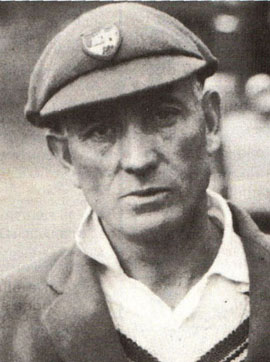
Charles Warrington Leonard Parker was an English cricketer, who stands as the third highest wicket taker in the history of first-class cricket, behind Wilfred Rhodes and Tich Freeman.

Edward George Dennett was a left arm spinner for Gloucestershire County Cricket Club between 1903 and 1926, and from his figures could be considered one of the best bowlers to never play Test cricket. His career of 2,147 first-class wickets puts him 23rd on the all-time list of wicket-takers, and only Glamorgan's Don Shepherd took more wickets without being capped. Owing to the strength of the competition at the time, Dennett was never able to progress even to lower representative levels. Dennett also failed to be nominated as a Wisden Cricketer of the Year, and only Worcestershire’s Reg Perks took more first-class wickets without ever being chosen.
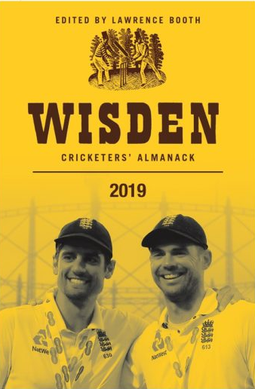
Wisden Cricketers' Almanack, or simply Wisden, colloquially the Bible of Cricket, is a cricket reference book published annually in the United Kingdom. The description "Bible of cricket" has been applied to Wisden since the early 1900s.
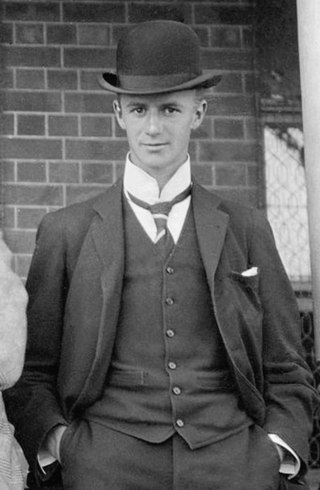
Charles Lucas Townsend was a Gloucestershire cricketer. An all-round cricketer, Townsend was classically stylish, left-handed batsman, who was able to hit well despite his slender build. His off-side strokes were particularly effective, and his driving allowed him to score at a consistent pace throughout his major innings. In his younger days Townsend was also a spin bowler, who relied chiefly on a big break from leg but could also turn the ball the other way. He was often extremely difficult on sticky wickets but very rarely effective on good ones.
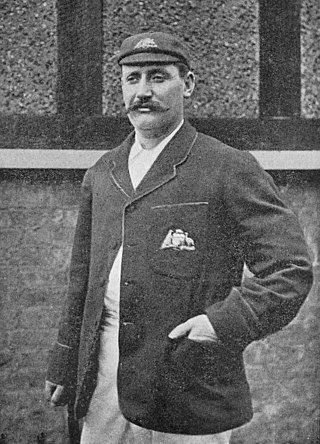
George Henry Stevens Trott was an Australian cricketer who played 24 Test matches as an all-rounder between 1888 and 1898. Although Trott was a versatile batsman, spin bowler and outstanding fielder, "it is as a captain that he is best remembered, an understanding judge of human nature". After a period of some instability and ill discipline in Australian cricket, he was the first in a succession of assertive Australian captains that included Joe Darling, Monty Noble and Clem Hill, who restored the prestige of the Test team. Respected by teammates and opponents alike for his cricketing judgement, Trott was quick to pick up a weakness in opponents. A right-handed batsman, he was known for his sound defence and vigorous hitting. His slow leg-spin bowling was often able to deceive batsmen through subtle variations of pace and flight, but allowed opposition batsmen to score quickly.
1890 was the 104th season of cricket in England since the foundation of Marylebone Cricket Club (MCC) and the first in which the County Championship was held as an official competition, following agreement between MCC and the leading county clubs at a meeting in December 1889. Surrey became the first official county champions after winning nine out of fourteen games.
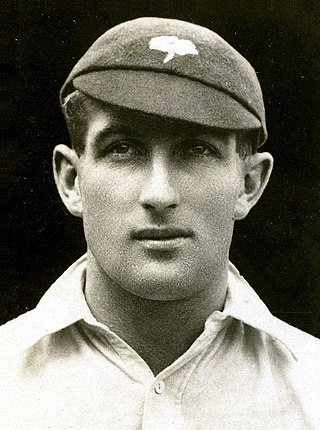
Abraham "Abe" Waddington, sometimes known as Abram Waddington, was a professional cricketer for Yorkshire, who played in two Test matches for England, both against Australia in 1920–21. Between 1919 and 1927 Waddington made 255 appearances for Yorkshire, and in all first-class cricket played 266 matches. In these games, he took a total of 852 wickets with his left arm fast-medium bowling. Capable of making the ball swing, Waddington was admired for the aesthetic quality of his bowling action. He was a hostile bowler who sometimes sledged opposing batsmen and questioned umpires' decisions, behaviour which was unusual during his playing days.

1919 was the 26th season of County Championship cricket in England and the first since 1914. The authorities had doubted if cricket would remain popular after a four-year break and the strain of war. It was decided that County Championship matches should be reduced from three days' duration to two, but cricket had not lost its popularity and the two-day experiment was a failure. Yorkshire finished the season as champions, topping the table by four percentage points. No Test cricket was played but an Australian Imperial Forces team toured England, playing matches from mid-May until mid-September. Andy Ducat, Patsy Hendren, Percy Holmes, Herbert Sutcliffe and Ernest Tyldesley were named in the 1920 edition of Wisden Cricketers' Almanack as the Five Cricketers of the Year for their 1919 performances.
1909 was the 20th season of County Championship cricket in England and featured a Test series between England and Australia. Kent won the championship and Australia, captained by Monty Noble, won the Test series.
1883 was the 97th season of cricket in England since the foundation of Marylebone Cricket Club (MCC). There was the first of four successive titles won by Notts, and the beginning of the "Great Revival" of Surrey, who had been among the weaker counties since 1866.

Sydney Herbert Pardon was a sports journalist who was the editor of Wisden Cricketers' Almanack for 35 editions, from 1891 until his death. His father was the journalist George Frederick Pardon.
Hubert Preston was a journalist and writer who was editor of Wisden Cricketers' Almanack for eight years from the 1944 edition to the 1951 edition. He contributed to 51 editions of the Almanack, and was the oldest editor of the publication, being 74 when he started in the position. He became a partner in the Cricket Reporting Agency in 1920.

Sam Hargreave was the most successful bowler for Warwickshire until the success of Foster and Field in winning the 1911 County Championship.
The Cricket Reporting Agency (CRA) was founded by Charles Pardon and George Kelly King in 1880. Throughout its 85-year existence, the CRA provided the Press Association (PA) with cricket and football reports and scores for use by newspapers. In its early years it covered other sports as well, including horse racing.
Combined Oxford and Cambridge Universities cricket teams were formed at intervals between 1839 and 1992, often playing against touring teams. Mostly the team consisted of students who were current members of either Cambridge University Cricket Club or Oxford University Cricket Club but there were four matches from 1874 to 1893 in which the Universities team was a Past and Present combination. The combined teams always held first-class status, unofficially at first and then officially from 1895.
The 1890 County Championship was the first County Championship held as an official competition, following agreement between Marylebone Cricket Club (MCC) and the leading county clubs at a meeting in December 1889. Surrey became the first official county champions after winning nine out of fourteen games.
Frederick Hammett Knott, known as Freddie Knott, was an English amateur cricketer. Knott played for Oxford University Cricket Club and Kent County Cricket Club in the years before the First World War. He played occasionally after the war, including once for Sussex in 1926.
Frederick Lee was an English barrister and a cricketer who played first-class cricket for Cambridge University, Surrey and Middlesex, plus other amateur sides, in the 1860s. He was born in Finsbury, London and died at Streatham, also in London.
The 1911 County Championship was the twenty-second officially organised running of the County Championship, and ran from 4 May to 5 September 1911. Warwickshire County Cricket Club won their first championship title. Somerset finished bottom of the table, winning only one match all season. Tom Hayward topping the batting charts, scoring 1,963 runs for Surrey at an average of 50.33, though C. B. Fry scored his 1,299 runs at a far superior average of 76.41. Lancashire's Harry Dean took the most wickets, accumulating 175 at an average of 17.52.
References
- ↑ Lee, Sidney, ed. (1895). . Dictionary of National Biography . Vol. 43. London: Smith, Elder & Co.
- ↑ Engel, Matthew (5 April 2013). "Words on the Wisden Cricketers' Almanack". ft.com. Retrieved 7 April 2013.
- ↑ Cricinfo profile